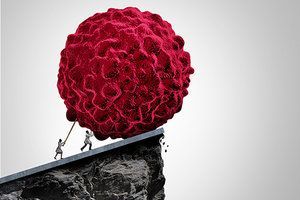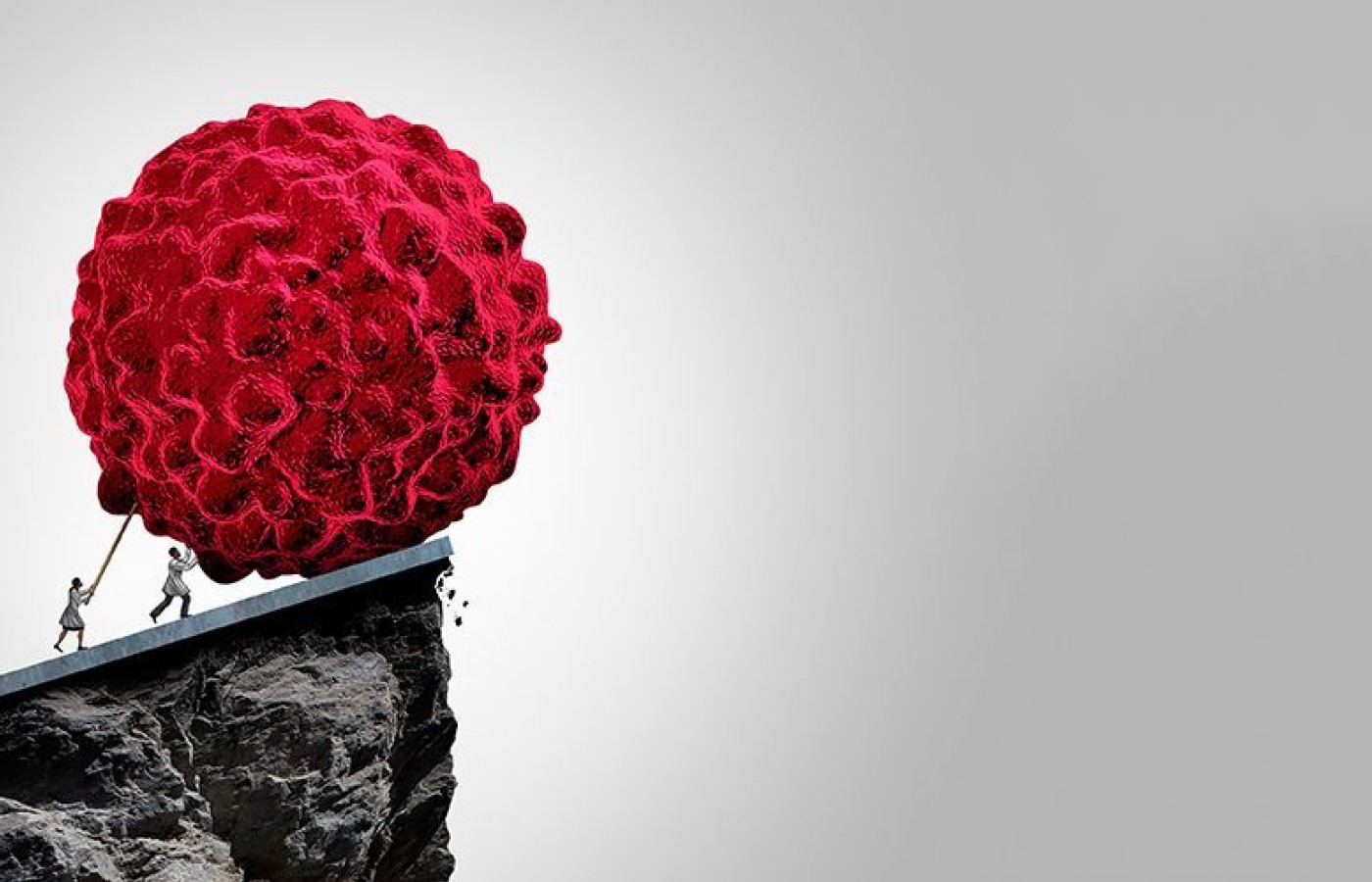Whether you accept it, avoid it or live somewhere in between, insurance coverage has become a defining issue for our profession. Patients increasingly expect to use their benefits, practitioners want to be compensated fairly for their time and expertise, and the system itself remains – at best – fragmented. The encouraging news is that coverage has expanded in meaningful ways. The challenging news is that reimbursement, across the board, remains inadequate.
Acupuncture in an Integrative Oncology Center
Integrative oncology is a patient-centered, evidence-informed field of cancer care that utilizes mind and body practices, natural products and/or lifestyle modifications from different traditions alongside conventional cancer treatments. Integrative oncology aims to optimize health, quality of life, and clinical outcomes across the cancer care continuum, and to empower people to prevent cancer and to become active participants before, during and beyond cancer treatment.1
Bill: Can you tell me a little bit about your background and how you found yourself in an integrative oncology environment?
Michael: After graduating from Bastyr University, Kenmore, WA in 2003, I accepted the position of full-time resident at the Bastyr Center for Natural Health. During my two-year residency, I was able to supervise students not only at the school clinic, but many of the off-site locations which operated in the King County Public Health System. Many of our patients were dealing with the long-term side effects of cancer treatment such as peripheral neuropathy and chronic pain. Biomedical treatment options were very limited, as they still are today, and often the patient population would seek us out, mostly in desperation. For the majority, we had a positive effect. There was an obvious role that acupuncture (as well as other aspects of traditional East Asian medicine Tai Chi, Tui na, dietary therapy, etc.), could fill in the process of cancer care survivorship. Understanding the value of research in truly integrating acupuncture into the mainstream medical model was what drove me to remain in integrative cancer care.

Bill: Please paint a picture of the oncology center at MD Anderson.
Michael: The University of Texas, MD Anderson Cancer Center has approximately 660 inpatient beds and sees over 1.5 million outpatient clinical visits a year. There are currently more than 1,200 clinical trials taking place. People come from around the world to receive care from our specialized cancer centers. MD Anderson treats almost all types of cancers from more common such as breast and prostate to very rare varieties including up to 44 different types of sarcoma.
Most patients enter the system already diagnosed and are seeking the experience and expertise that our medical staff can offer. We have multiple outpatient centers in the Houston area where patients can receive treatment and assessment without having to come to the main hospital. In addition, there are multiple satellite centers around the world that follow MD Anderson protocols and participate in our research studies.
Mainly, referrals for acupuncture come for the following reasons:
- Pain management
- Nausea and/or vomiting
- Fatigue
- Hot flashes
- Xerostomia
- Neuropathy
- Anxiety
- Constipation/Diarrhea
- Post-operative Ileus
- Sleep disturbance
Acupuncture is also used often when other treatments have not been successful for conditions such as dyspnea, tinnitus, dysgeusia or dysphagia.
Bill: How does MD Anderson differ from other integrative oncology centers?
Michael: Acupuncture was a service offered to MD Anderson patients at the Texas Medical Center location for over 20 years under the guise of "The Place of Wellness." At first being an outpatient and then an inpatient service and then a bit of both, acupuncture struggled to find the best fit on how our services would be best offered. About 10 years ago, many physicians and staff began to see the value the services we're providing and created the Integrative Medicine Center (IMC). The IMC became a referral service that physicians and mid-level providers could directly refer patients to receive IMC services. The IMC mainly referred clinical services including acupuncture, oncology massage, health psychology, exercise therapy, whole foods nutrition, music therapy and individualized meditation sessions. Only MD Anderson patients are qualified to receive these services with some exceptions made for caregivers in regard to massage. While the majority of our outpatients are undergoing active care (chemo / targeted / immunotherapy, radiation, hormonal, etc.), many are in survivorship and trying to better cope with the side effects of treatment.
This differs from most other oncology centers I have experienced in the country. The IMC is an integral part of the hospital and operates only as a referral service, much like physical/occupational therapy would in other hospitals. Our services are viewed as an essential part of a patient's total care plan. Currently, there are two full time acupuncturists on staff and we are actively recruiting a third. There are plans to employ more acupuncturists in the near future as our Houston area satellite locations have expressed a desire to offer acupuncture services at their locations. It is important to note that MD Anderson acupuncturists are not permitted to recommend any herbal medicine or herbal formulas for patients. We also do not use moxabustion in our clinic, but do use infrared heat over points where moxabustion may have been indicated.
Bill: What research have you taken part in? Are there specific metrics measured for each patient?
Michael: I have been at MD Anderson for over five years and during this time have participated in multiple clinical trials and worked on several reviews which have been published in a number of peer-reviewed journals.2,3,4 Currently in our clinic, we are conducting a 3-arm trial (active, sham, and wait list control (usual care)) to determine the role of acupuncture in treating chronic post mastectomy pain. Patients and research assistants who assess the patients are blinded to which group the patient is in. Obviously, the acupuncturists are not.
In addition, our department has been gathering information for inpatient and outpatient services for many years using the Edmonton Symptom Assessment Scale (ESAS) with the goal of answering the question, "Are our patients who are receiving acupuncture getting better?" The ESAS uses a 10 point scale with 0 being no complaints and 10 being the worst possible manifestation of a specific issue. In March 2018, we published, "Inpatient Acupuncture at a Major Cancer Center."2 We concluded that patients who received inpatient acupuncture at our center experienced significant improvement after treatment for pain, sleep disturbance, anxiety, drowsiness, nausea, and fatigue. Outpatient analysis of ESAS scores will be evaluated in the near future.
Bill: How do you envision the intersection of Eastern and Western medicine?
Michael: Having lived many years abroad, if we are to have both Eastern and Western Medicine coexist, acupuncturists must look at working in a hospital setting as living and acclimating in a foreign country. Out of respect for our hosts, we must learn their language, their customs and forge positive relationships. This is the only way we can hope to have continued acceptance. This does not mean that we should ever forget the paradigm of Eastern medicine that we work within. However, instead of discussing Qi with a medical team, we should speak more of how acupuncture can affect the production of endogenous opioids or reduce inflammation. Instead of relying solely on pulse and tongue, looking through MRI/CT or PET scans to gain intimate knowledge of tumor location or surgical changes is essential. Having clear guidelines as to when acupuncture is not appropriate for the patient is also extremely important.
Because our patients may have serious side effects from treatment or disease progression, to receive inpatient or outpatient acupuncture services through the IMC, the following procedures must be followed and certain health guidelines must be met:
- Hospital physicians send an order for an integrative medicine consult, inpatient or outpatient.
- The patient is seen by one of our integrative oncologists or mid-level practitioners and a plan is developed in collaboration with the patient which may include any of our services.
- Labs are checked. To receive acupuncture, patients are required to have a blood absolute neutrophil count at or above 1,000 neutrophils/µL as well as over 25,000 platelets/µL. Patients must also have an INR value at or below 2.00 if they are on certain anticoagulants such as warfarin.
- For the acupuncturist, clinical guidelines must also be followed for each treatment. These are codified and followed for each patient and for each treatment. As many of our patients are on treatment involving multiple medications, clinical judgment by the acupuncturist is essential in determining if the patient is appropriate that day to receive acupuncture.
Bill: Describe the communication/interaction with other members of your team.
Michael: All notes from any practitioner working within the IMC, or hospital in general, records that interaction in the electronic medical records (EMR). Any and all persons involved in a patient's care are encouraged to reach out to other providers if we see there may be changes in the patient that were not apparent on the last interaction that provider may have had.
Within the IMC, we communicate officially through email or casually through conversation on any changes we see as relevant in our patients. Weekly, we have an interdisciplinary team meeting where the IMC clinical staff meet to discuss challenging patients. Any and all input is respected and encouraged. At these meetings, as an acupuncturist, I can openly discuss the pathology of cancer in Eastern medicine terms and share different ways we can intervene.
Our IMC team at MD Anderson has been steadily growing our services. Acupuncture is becoming more widely accepted, not only among the physicians, but among the patients as well. Each acupuncturist can see 30 to 50 patients per week, with an expanded inpatient service set to begin in the fall of 2018. We are hiring another full-time acupuncturist with more planned for the future. More insurance companies are paying for acupuncture, especially when viewed as part of a cancer treatment or recovery plan. The future role of acupuncture at MD Anderson has been expanding and as our model of integrative care becomes integral for our patients' treatment and recovery plans, this can be a positive model for the future of our profession.
References
- Witt CM, Balneaves LG, et al. A Comprehensive Definition for Integrative Oncology. JNCI Monographs, 1 Nov 2017;(52).
- Garcia MK, Spano M, et al. Inpatient Acupuncture at a Major Cancer Center. Integr Cancer Ther, 2018 Mar;17(1):148-152.
- Garcia MK, Spano M, et al. Systematic review of acupuncture to control hot flashes in cancer patients. Cancer, 2015 Nov 15;121(22):3948-58.
- Garcia MK, Spano M, et al. Acupuncture for symptom management in cancer care: an update. Curr Oncol Rep, 2014 Dec;16(12):418.



